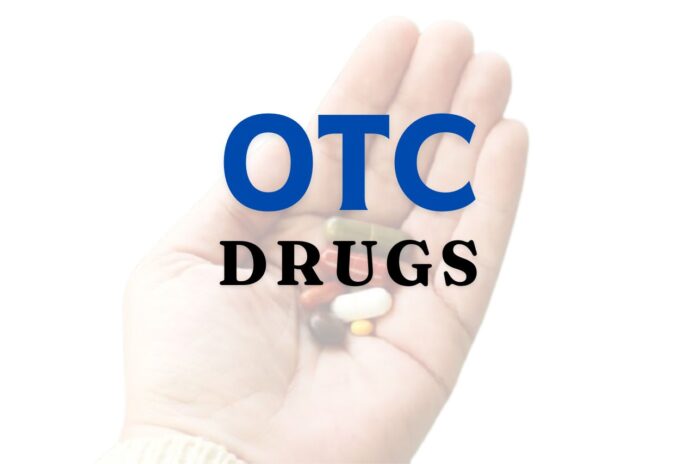Last Updated on October 10, 2024 by The Health Master
The Painkiller addiction: OTC medication
Choosing an over-the-counter (OTC) medication in India is not uncommon, thanks to easy accessibility. And while this availability may seem like a boon to many, it is also a curse.
A 2020 review article Over-the-counter medicines: A global perspective and Indian scenario in the Journal of Postgraduate Medicine shares that 52 percent of Indians were estimated to self-medicate, according to a survey across 10 cities.
While the statistic is alarming, it is also disheartening when one considers the rising cases of painkiller addiction. Having worked in de-addiction for 24 years, Sheeba Williams, senior counselor, TTK Hospital, TT Ranganathan Clinic, talks about the causes, dangers, and treatment of painkiller addiction.
What causes painkiller addiction, and how often do you see it?
Initially, there were only alcohol patients coming in. Now we have a lot of patients who are using an opioid or narcotic.
People usually use pain-relieving medicines over the counter for some kind of physical ailment, but these painkillers activate the pleasure centre in the brain and cause euphoria. People get addicted to it, and they want to do it more and more to feel a temporary sense of wellbeing.
The pain centre in the brain gets nullified initially and it becomes addictive because of the endorphins neurotransmitter secreted in the brain. The withdrawal is just the opposite of the effect when they take the painkillers. So when we are not on it, they feel pain. And to handle it, they take it again and again.
Could you talk a little bit more about the withdrawal?
When people take painkillers, they feel it has a tranquilising effect – they feel as if they have to go to sleep and feel the body is in the air, and withdrawal is just the opposite. They feel restless and are not able to sleep. Sometimes, some patients even complain of nausea, and lack of appetite.
When does taking over-the-counter medicine start becoming a problem?
All the medications that are prescribed by the doctor, there is a particular time frame for them. So if a doctor prescribed medicine, for sleep or for pain for a particular period of time, say, 10 days, it is called drug use. If I take that prescription, and increase the dosage, for example, 10 medicines a day, and do this for six months, it becomes drug abuse.
How do you recognize it? When should one go to a doctor/de-addiction centre?
According to the definition of addiction, a person’s drug abuse or substance use is becoming a problem when it starts affecting one or more areas in his life like family responsibilities, financial condition etc. It’s very difficult to let go of the addiction because of the withdrawal.
Physical and psychological withdrawals exist, sometimes they can feel depressed, or anxious or even have a seizure. It’s always better to get into a treatment centre where there is a safe administration of medicines for their withdrawals and symptoms.
Regarding the statistics, has the number increased?
It’s increasing nowadays. Now, many youngsters have started using these painkillers because it’s cost-effective and easily available. For example, if they want to sleep after an exam, they can just take a painkiller and sleep. The age of initiation has considerably come down.
When I started my career 24 years ago, the client would say they started using drugs when they were 25. But now some say in class 8 or 10, usually mislead by a peer. This means the damage to the developing brain is greater because the brain keeps developing from age five to 20. When drug use is initiated, brain deterioration or functioning can be affected.
Is there any way or need for intervention?
The government has a drug policy where these medicines cannot be given over the counter without prescription. The doctor’s prescription and the prescription date are very important. Only a few medical centres follow these procedures.
Maybe more stringent procedures from authorities to ensure that it’s not easily available (would be helpful). People who are taking more money to give drugs without any prescription should be punished. It’s also important to create awareness. Parents and teachers have to play a better role in guiding children. Families have to be more responsible now with social media.
What does de-addiction look like?
All addiction treatments should be an in-patient programme. Whenever a person comes in for a treatment programme, the first thing that needs to be done is detoxification. The painkillers have definitely done a lot of damage to the system.
After the detoxification process, the person is physically fit but not mentally. Which means this craving still persists. The next step will be psychological intervention in the form of counselling and therapy, and other interventions.
High BP drugs could be repurposed to delay ageing: Research
What is Normal Blood Sugar by Age? Know The Range
Indian scientists discover new Anti-Cancer Agent
Skin diseases: Avoid self-medication, advice experts
BF-7: क्या वैक्सीन लगवा चुके लोगों को भी है Covid के नए वैरिएंट से खतरा? Dr. Trehan answers
Govt to provide 450 types of medical tests free of cost from Jan 1
Google’s this Tool can easily understand your Doctor’s bad handwriting
10 things: Must keep in First Aid Box: Very useful in emergency
Blood को पतला करने के लिए इन Foods को करे diet में शामिल: No medicine
Replace your Cosmetic products with these 7 harmless natural things
For informative videos on consumer awareness, click on the below YouTube icon:
For informative videos by The Health Master, click on the below YouTube icon:
For informative videos on Medical Store / Pharmacy, click on the below YouTube icon:
For informative videos on the news regarding Pharma / Medical Devices / Cosmetics / Homoeopathy etc., click on the below YouTube icon:
For informative videos on consumer awareness, click on the below YouTube icon:









